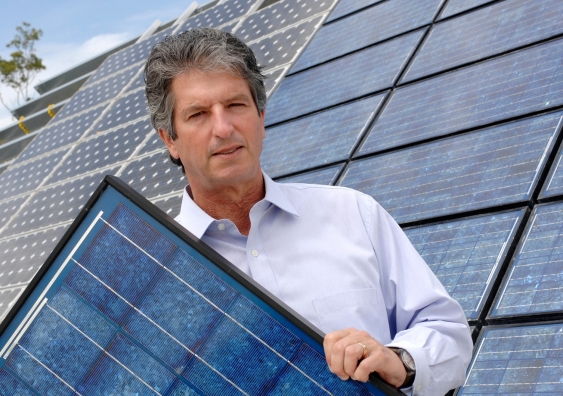White House backs UNSW solar research
US President Barack Obama has outlined plans to enhance collaboration between Australian and US photovoltaics researchers following bilateral meetings with Prime Minister Tony Abbott.
US President Barack Obama has outlined plans to enhance collaboration between Australian and US photovoltaics researchers following bilateral meetings with Prime Minister Tony Abbott.

United States President Barack Obama has outlined plans to enhance collaboration between Australian and US photovoltaics researchers following bilateral meetings with Prime Minister Tony Abbott last week.
The plans are contained in a fact sheet issued by The White House that commits to "expand and deepen collaboration between the United States and Australia".
"The US National Renewable Energy Laboratory, together with Australian National University and UNSW Australia, plan to enhance their collaboration by sharing knowledge and best practices on photovoltaics in our ongoing efforts to meet an increased energy demand with a focus on clean energy," the White House said.
The commitment builds on the work of the UNSW-based Australia—US Institute for Advanced Photovoltaics (AUSIAPV), an historic international research initiative started in 2013.
"I am excited that President Obama and Prime Minister Abbott have re-committed to the importance of photovoltaics R&D and ongoing joint efforts to transition the world to cleaner energy supplies," Institute Director and UNSW Scientia Professor Martin Green says.
AUSIAPV was established with a $33.1 million grant from the Australian Renewable Energy Agency (ARENA) and support from industry partners.
Australian researchers contributing to AUSIAPV are represented by the Australian Centre for Advanced Photovoltaics (ACAP), which is led by UNSW and counts Australian National University, The University of Melbourne, The University of Queensland, Monash University and CSIRO as members.
AUSIAPV links ACAP with the US National Renewable Energy Laboratories, Arizona State University and other leading US research institutes.
AUSIAPV and ACAP's inaugural combined annual report – released last week – notes the program met or exceeded all its technical milestones in its first year of operation.
The annual report also details important technological advances for silicon and organic solar cells.
Highlights of the report include:
Background ACAP Collaborators: UNSW Australia, Australian National University, University of Melbourne, Monash University, University of Queensland, CSIRO (Materials Science and Engineering, Melbourne), Suntech Research and Development, Australia (SRDA), Trina Solar Co. Ltd., Bluescope Steel and BT Imaging.
AUSIAPV—US Collaborators: NSF-DOE Engineering Research Center for Quantum Energy and Sustainable Solar Technologies (QESST), the US National Renewable Energy Laboratory, Sandia National Laboratories, The Molecular Foundry at Lawrence Berkeley National Laboratories, Stanford University, Georgia Institute Technology and the University of California, Santa Barbara.
Media contact: Ry Crozier, UNSW Media Office | 02 9385 1933 / 0425 245 887 | r.crozier@unsw.edu.au

Scientia Professor Martin Green.